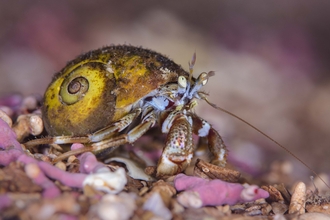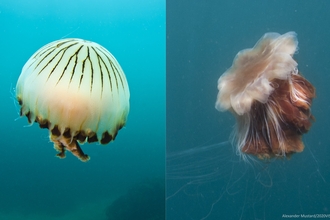
Shore rockling by Paul Naylor
Shore rockling
These large rocky shore fish look like they belong in deeper waters, but they are the find of the day for any rockpooler!
Scientific name
Gaidropsarus mediterraneusWhen to see
April - October.Species information
Statistics
Up to 25cm long.Conservation status
Common.




